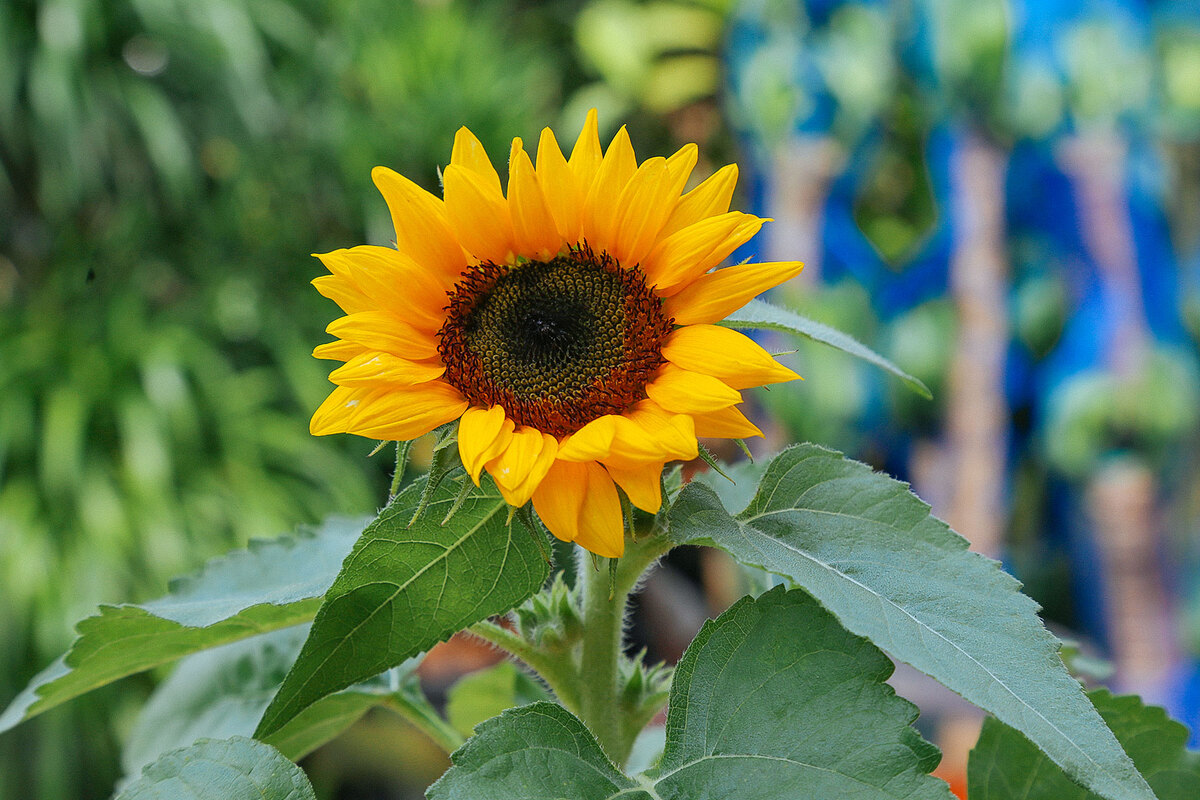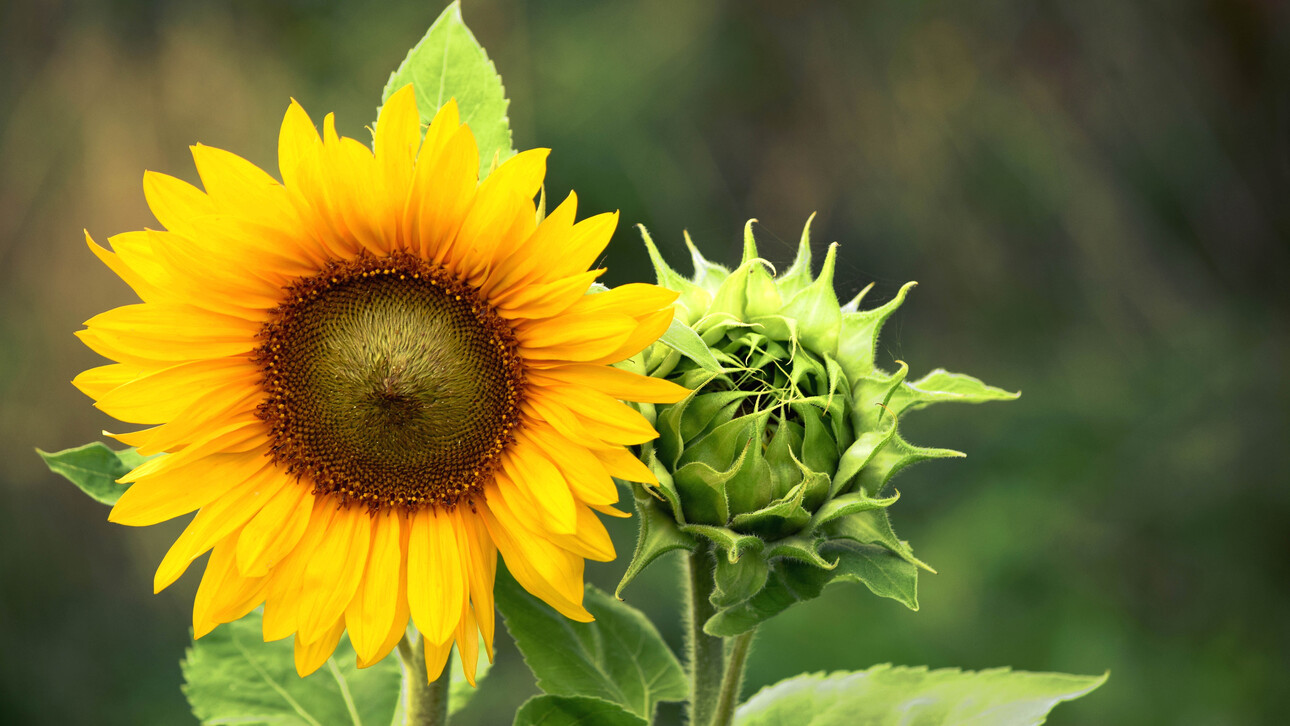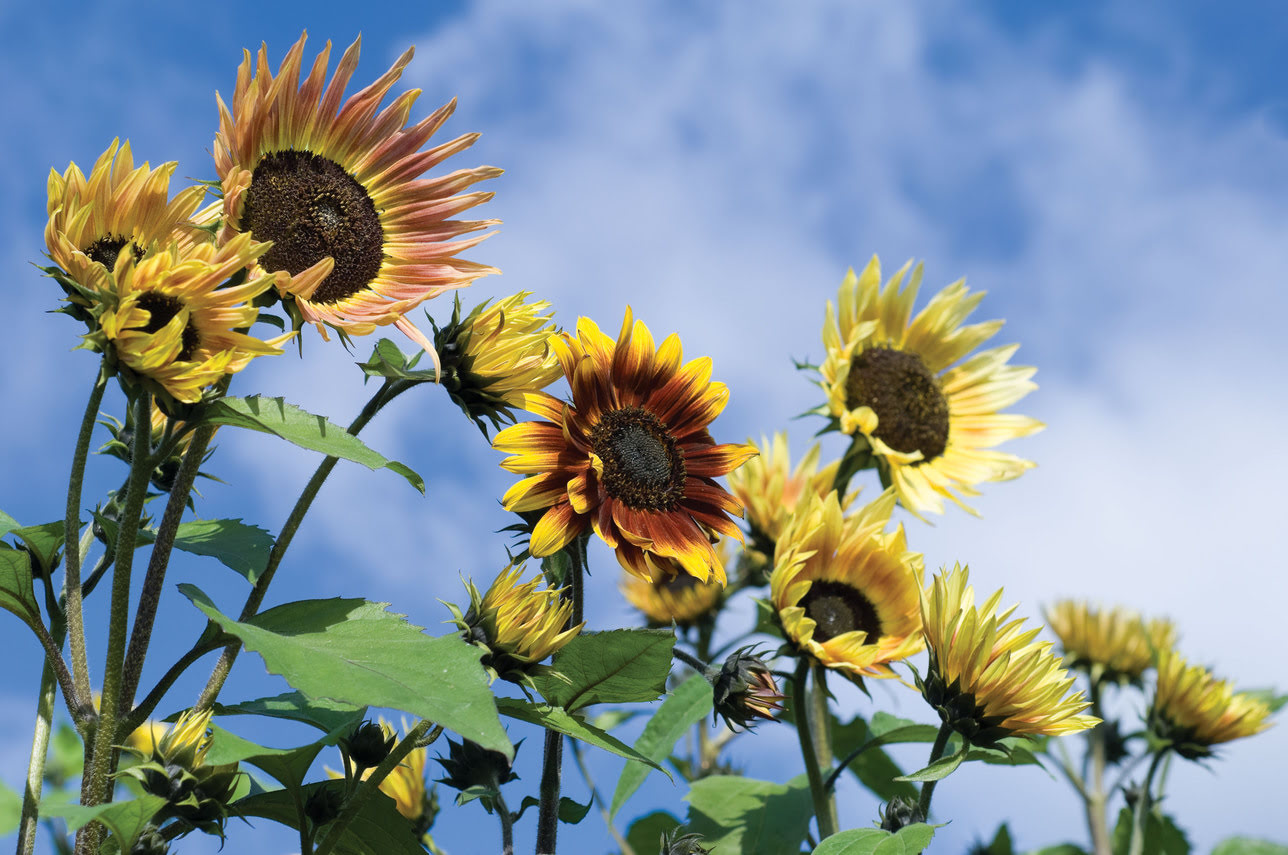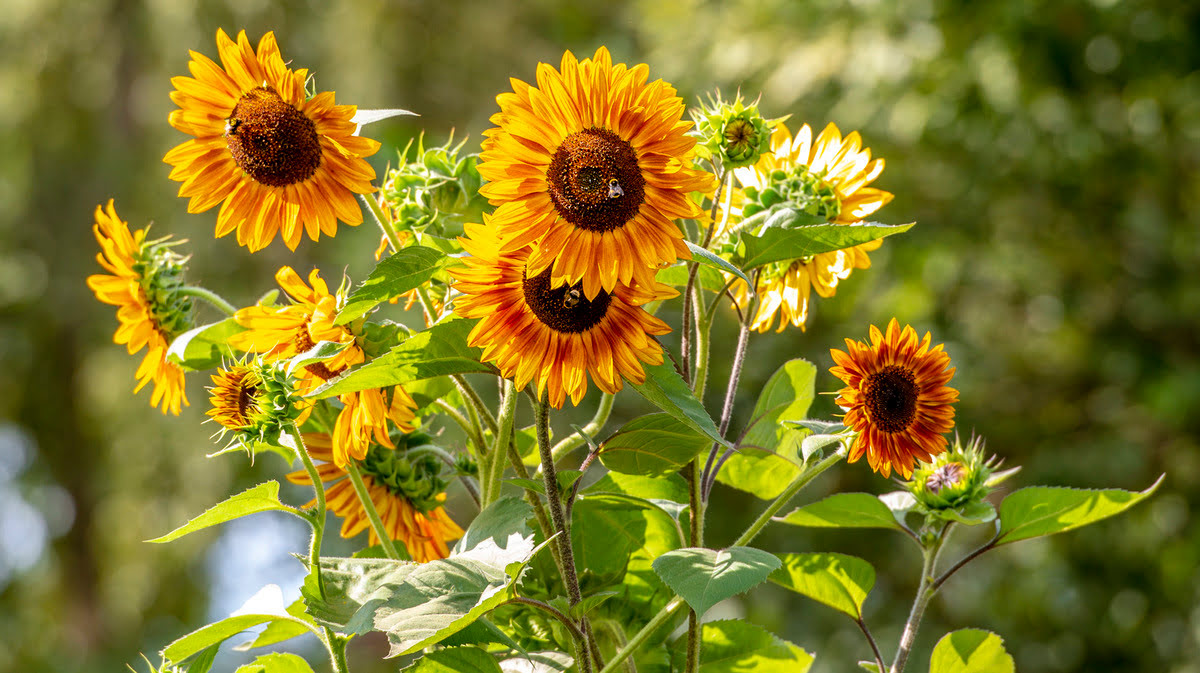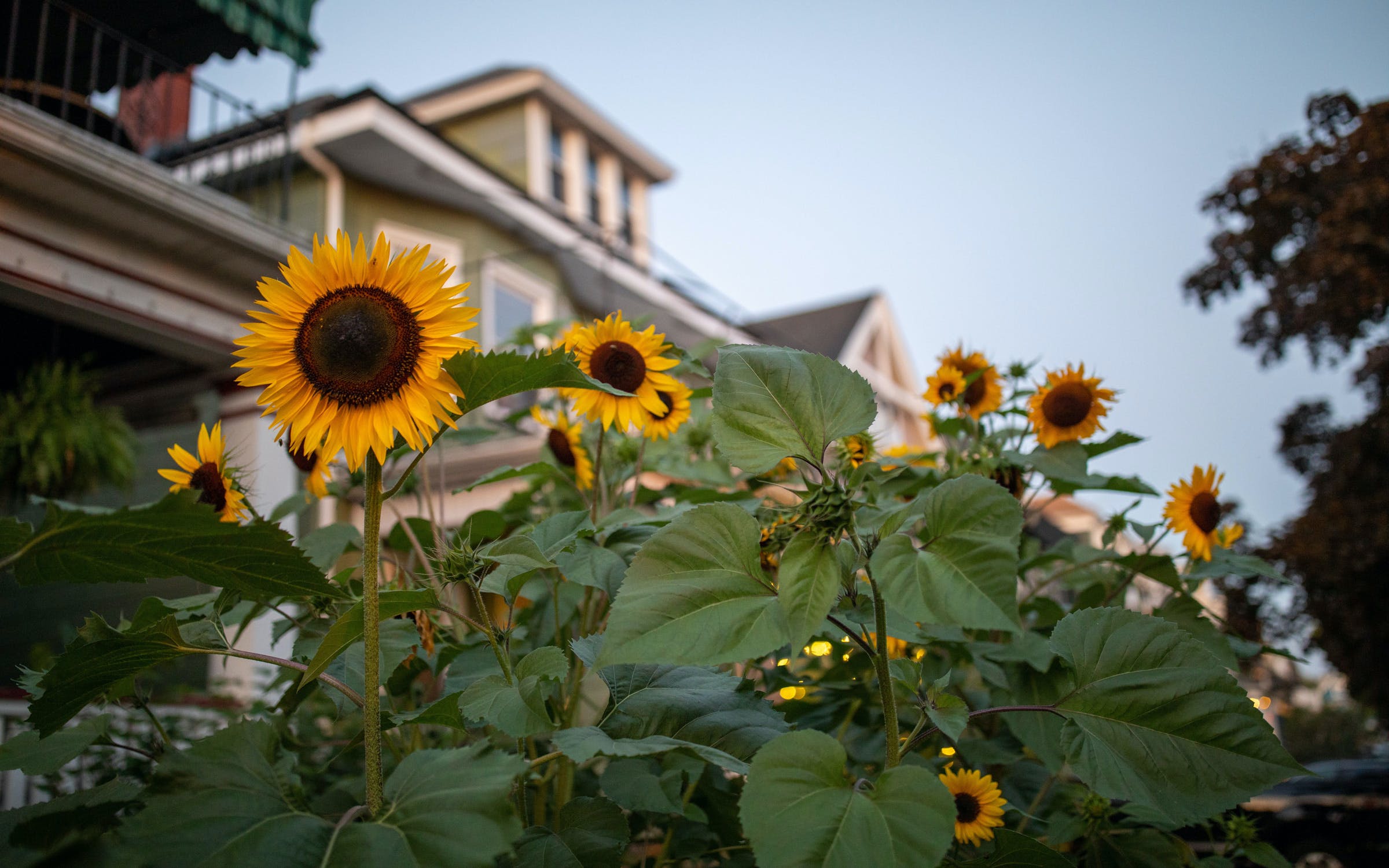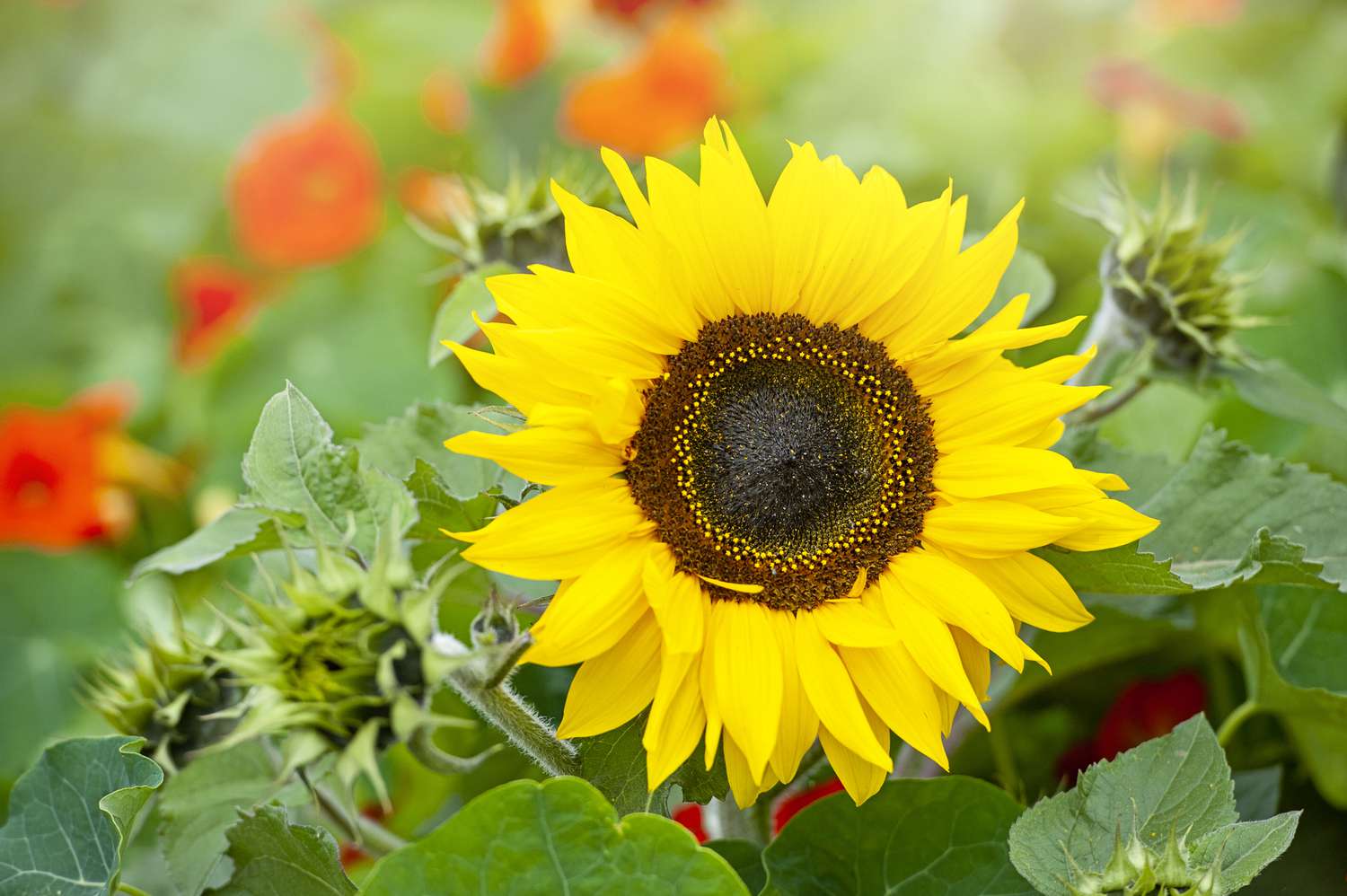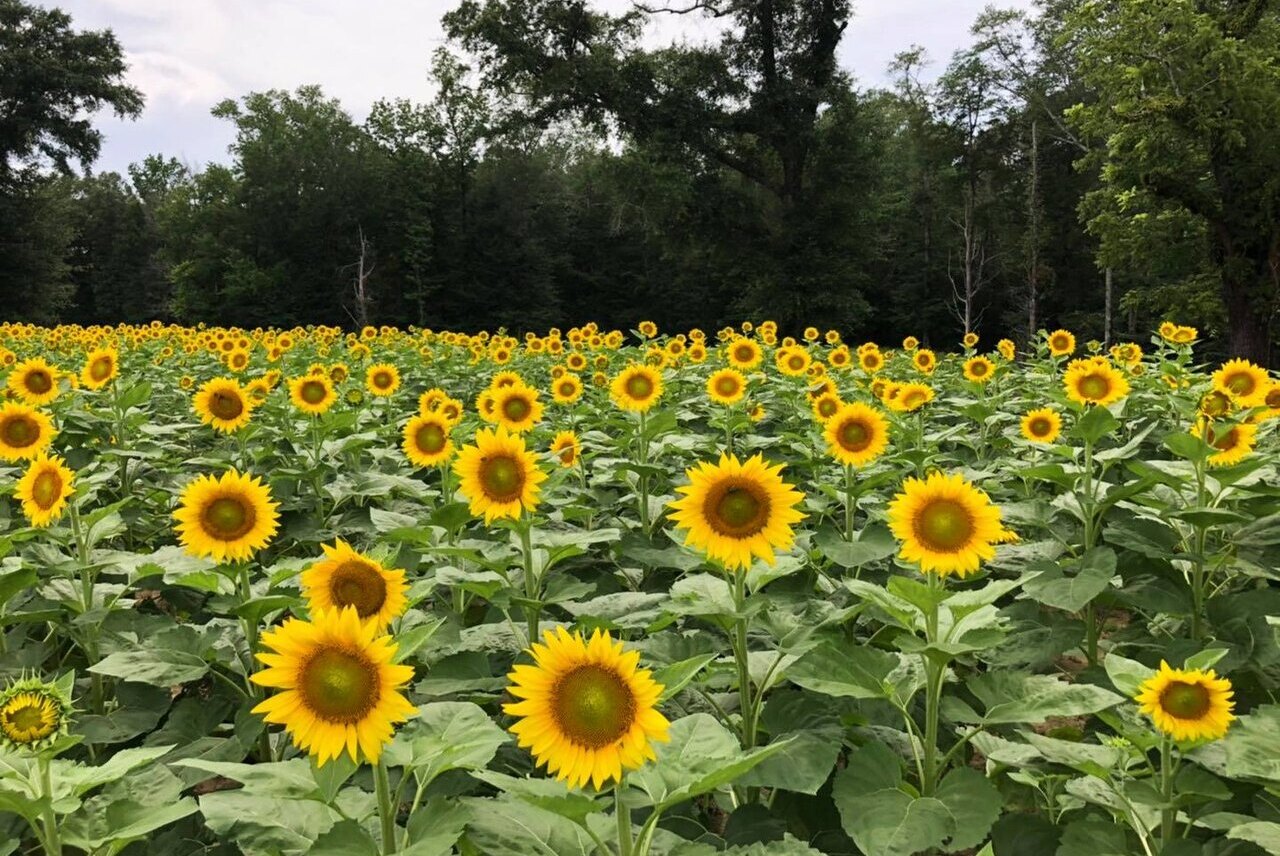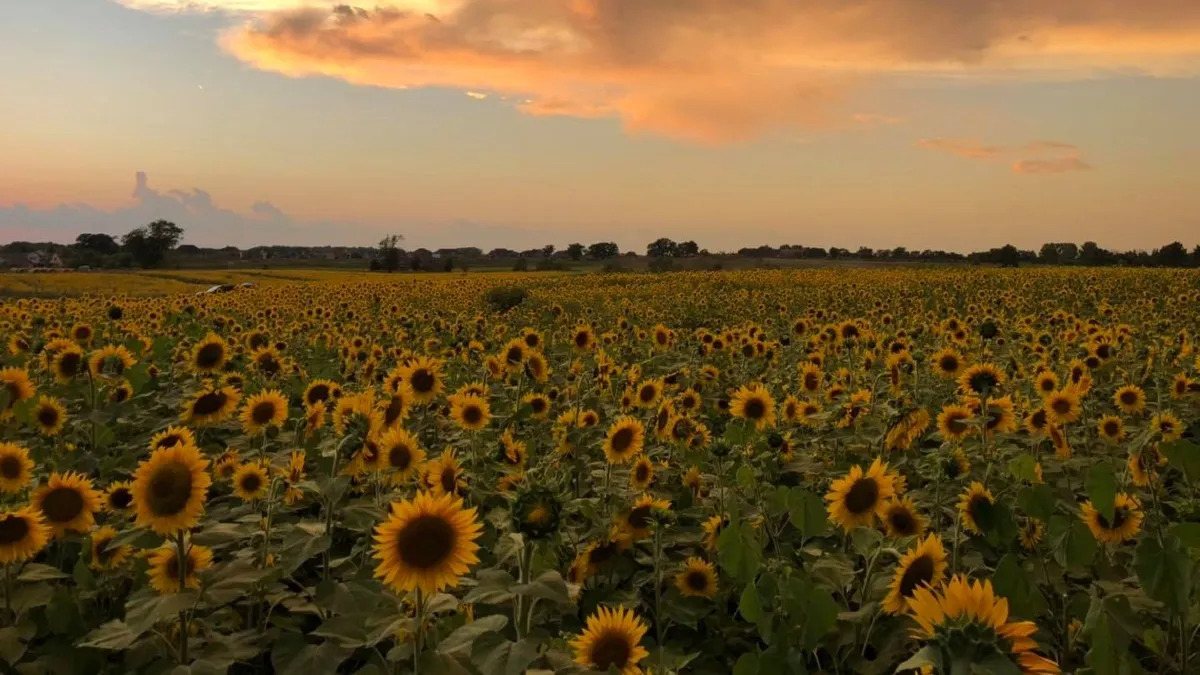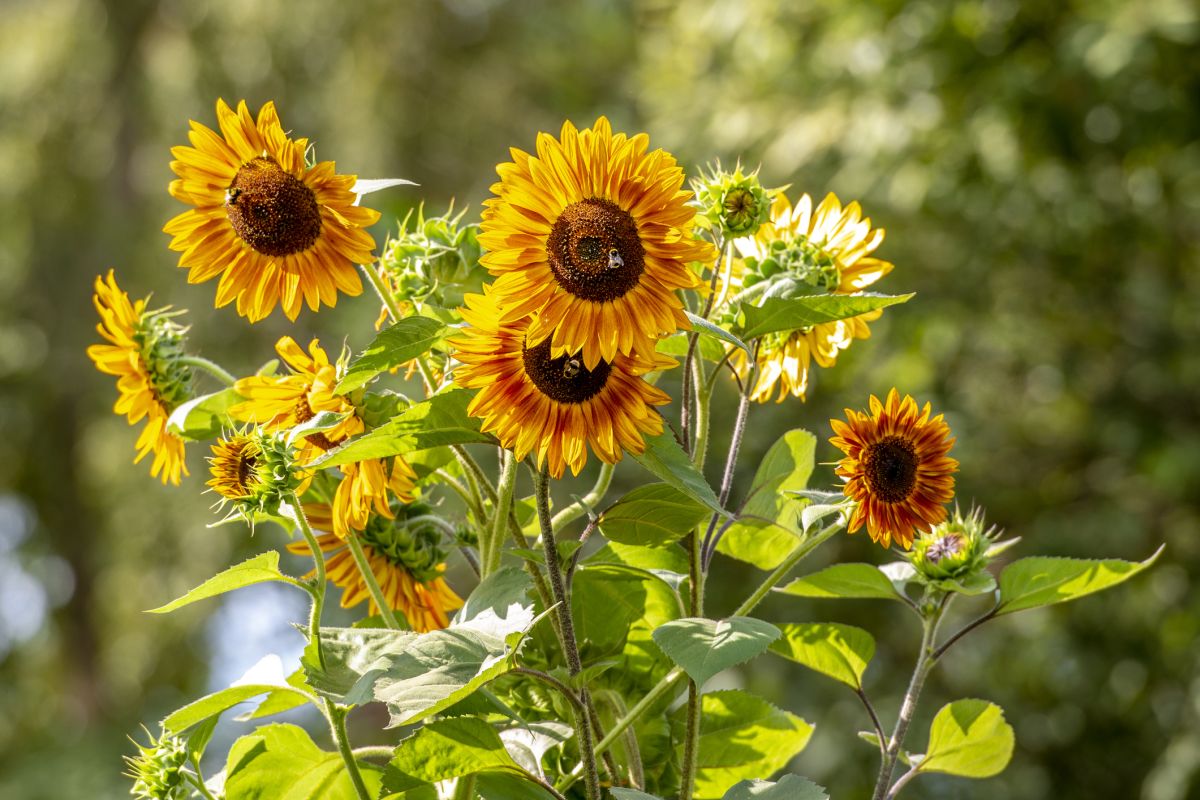Home>Types of Gardening>Ornamental Gardening>How To Plant A Field Of Sunflowers
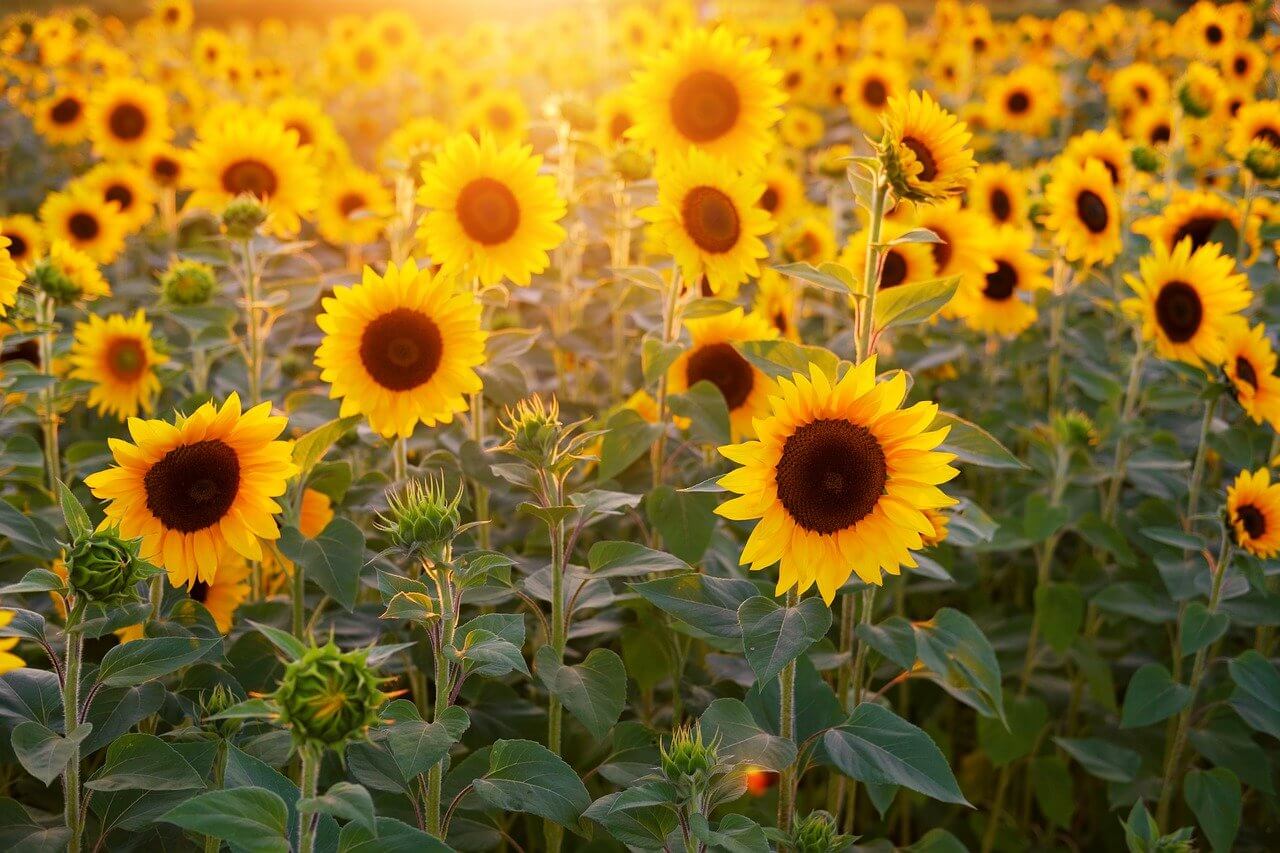

Ornamental Gardening
How To Plant A Field Of Sunflowers
Modified: January 22, 2024
Learn the secrets of successful ornamental gardening with our step-by-step guide on how to plant a beautiful field of sunflowers. Discover expert tips and techniques to create a stunning display in your garden.
(Many of the links in this article redirect to a specific reviewed product. Your purchase of these products through affiliate links helps to generate commission for Chicagolandgardening.com, at no extra cost. Learn more)
Table of Contents
- Introduction
- Step 1: Choosing the Right Location
- Step 2: Preparing the Soil
- Step 3: Selecting and Purchasing Sunflower Seeds
- Step 4: Planting the Sunflower Seeds
- Step 5: Watering and Nurturing the Sunflowers
- Step 6: Protecting the Sunflowers from Pests
- Step 7: Harvesting and Enjoying the Sunflowers
- Conclusion
Introduction
Welcome to the world of ornamental gardening, where the beauty of nature meets the artistry of human hands. Among the many stunning flowers that can adorn your garden, few can rival the charm and grandeur of sunflowers. With their vibrant yellow petals and towering stalks, sunflowers bring a sense of joy and warmth to any landscape. Whether you’re an experienced gardener or just starting out, learning how to plant a field of sunflowers can be a rewarding and enriching experience.
Planting a field of sunflowers not only adds visual appeal to your garden, but it also attracts pollinators like bees and butterflies. Plus, you’ll have the opportunity to enjoy the bountiful harvest of sunflower seeds or use the blossoms as beautiful decorations. While the process may seem daunting at first, with the right knowledge and a little bit of patience, you can successfully grow a field of sunflowers that will be the envy of your neighborhood.
In this comprehensive guide, we will walk you through the step-by-step process of planting a field of sunflowers. From choosing a suitable location to harvesting the fully grown sunflowers, we will provide you with all the information you need to make your sunflower dreams a reality. So, grab your gardening tools and let’s dive into the wonderful world of sunflowers!
Step 1: Choosing the Right Location
Choosing the right location for your sunflower field is crucial for their growth and development. Sunflowers thrive in areas with plenty of sunlight and well-drained soil. Here are some factors to consider when selecting the perfect spot:
- Sunlight: Sunflowers require at least 6-8 hours of direct sunlight each day. Look for an area in your garden that receives ample sunlight and is not shaded by trees or buildings. A south-facing spot is usually ideal for maximum sun exposure.
- Soil Quality: Sunflowers prefer soil that is well-drained and moderately fertile. Before planting, test the soil pH and make sure it falls between 6.0 and 7.5, which is slightly acidic to neutral. If necessary, amend the soil with organic matter, such as compost, to improve its texture and nutrient content.
- Wind Protection: Sunflowers can be tall and top-heavy, which makes them susceptible to wind damage. Consider planting your sunflower field near a fence, wall, or other structures that can offer some protection from strong winds. This will help prevent the stalks from breaking and the flowers from getting damaged.
- Space Availability: Sunflowers need adequate space to spread out and grow. Depending on the variety, they can reach heights of 3-15 feet and have a spread of 1-3 feet. Make sure there is enough room between each plant to allow for proper airflow and sunlight penetration.
- Aesthetic Appeal: While functionality is important, don’t forget to consider the visual impact of your sunflower field. Choose a location that complements your overall garden design and enhances the beauty of your outdoor space. Sunflowers can serve as focal points or create stunning backdrops for other garden beds and plantings.
By taking these factors into account, you’ll be able to select the perfect location for your sunflower field. Once you’ve found the ideal spot, it’s time to prepare the soil for planting, which we’ll cover in the next step.
Step 2: Preparing the Soil
Preparing the soil is a crucial step in ensuring the success of your sunflower field. The right soil conditions will provide your sunflowers with the nutrients they need to thrive. Here’s how to prepare the soil:
- Remove Weeds and Debris: Start by clearing the planting area of any weeds, rocks, or debris. Weeds compete with sunflowers for nutrients and water, so it’s important to remove them before planting.
- Loosen the Soil: Use a garden fork or tiller to loosen the soil to a depth of about 12-18 inches. This will help improve drainage and allow the sunflower roots to penetrate the soil more easily.
- Add Organic Matter: Incorporate organic matter, such as compost or well-rotted manure, into the soil. This will help improve its fertility, structure, and water-holding capacity. Spread a layer of organic matter and mix it evenly into the soil.
- Test Soil pH: Test the soil pH using a soil testing kit or by sending a sample to a local agricultural extension service. Sunflowers thrive in slightly acidic to neutral soil with a pH range of 6.0 to 7.5. If the pH is too low or too high, make the necessary adjustments by adding soil amendments.
- Add Fertilizer: If your soil lacks essential nutrients, you can incorporate a balanced fertilizer into the soil during the preparation process. Look for a slow-release granular fertilizer that provides a good balance of nitrogen, phosphorus, and potassium.
- Level the Soil: After incorporating organic matter and fertilizer, use a rake to level the soil surface. This will ensure a smooth planting area and make it easier to plant the sunflower seeds evenly.
Once the soil is properly prepared, you’re ready for the next step: selecting and purchasing sunflower seeds.
Step 3: Selecting and Purchasing Sunflower Seeds
Choosing the right sunflower seeds is essential for a successful and beautiful sunflower field. Here are some factors to consider when selecting and purchasing sunflower seeds:
- Variety: Sunflowers come in various sizes, colors, and shapes. Consider the purpose of your sunflower field – whether you want it for aesthetic beauty, bird feed, or seed production. Some popular varieties include the giant sunflowers (Helianthus annuus) known for their enormous blooms, the dwarf sunflowers suitable for containers and small spaces, or the multi-colored varieties for a vibrant display.
- Maturity Time: Pay attention to the maturity time of the sunflower seeds. Some varieties mature faster than others, so if you’re looking for a quicker bloom, opt for varieties with shorter maturity times. If you want an extended flowering period, choose a mix of early, mid, and late-season varieties.
- Seed Quality: Ensure that the sunflower seeds you purchase are of high quality. Look for reputable seed suppliers or nurseries that provide reliable and certified seeds. Check for the germination rate and any special instructions for planting on the seed packet.
- Quantity: Determine how many sunflowers you want in your field and calculate the number of seeds you’ll need. Consider the spacing requirements for your chosen sunflower variety and the available space in your garden.
- Additional Considerations: Take into account other factors such as pest and disease resistance, as well as any specific characteristics you desire in your sunflowers. Consider the climate and growing conditions in your area to ensure you choose varieties that are well-suited to your environment.
- Purchasing: Once you have decided on the variety and quantity of sunflower seeds you need, purchase them from a reliable source. You can find sunflower seeds at local garden centers, nurseries, or online seed suppliers. Ensure that the seeds are fresh and packaged properly to maintain their viability.
By carefully selecting and purchasing your sunflower seeds, you’ll set the stage for a delightful sunflower field. In the next step, we’ll dive into the exciting process of planting the sunflower seeds.
Step 4: Planting the Sunflower Seeds
Now that you have your sunflower seeds ready, it’s time to plant them and watch them grow into magnificent sunflowers. Follow these steps to ensure successful planting:
- Timing: Sunflowers are warm-season plants and thrive in temperatures between 70°F and 78°F (21°C to 26°C). Plant your sunflower seeds after the threat of frost has passed and when the soil temperature has reached around 50°F (10°C).
- Spacing: Consider the spacing requirements for your chosen sunflower variety. Most varieties require planting the seeds 6-12 inches apart, while larger varieties may need spacing of up to 24 inches. Space rows at least 2-3 feet apart to allow for proper growth and airflow.
- Planting Depth: Sunflower seeds should be planted about 1 inch deep in the soil. Make a small hole with your finger or a garden trowel, drop a seed into each hole, and cover it with soil. Gently firm the soil around the seeds to ensure good seed-to-soil contact.
- Watering: After planting the seeds, give them a thorough watering to settle them into the soil. Use a gentle spray or a watering can with a rose attachment to avoid displacing the seeds. Keep the soil consistently moist but not waterlogged as the seeds germinate and the seedlings emerge.
- Labeling: If you’re planting different varieties or want to keep track of the planting locations, consider labeling each row or section with the name of the variety or other relevant information. This will help you identify and appreciate the distinct characteristics of each sunflower variety.
- Protective Covering: Consider using a protective covering, such as a thin layer of mulch or row covers, to help conserve moisture and protect the seeds from birds and other pests. Remove the covering once the seedlings have emerged.
Remember to follow the specific planting instructions provided on the seed packet for your chosen sunflower variety. With proper planting techniques, your sunflower seeds will sprout, and you’ll soon see the beautiful sunflower seedlings emerging from the soil. In the next step, we’ll discuss how to care for and nurture your growing sunflowers.
Step 5: Watering and Nurturing the Sunflowers
Proper watering and nurturing are essential for the healthy growth and development of your sunflowers. Here are some important points to keep in mind:
- Watering: Sunflowers need regular watering, especially during the hot summer months. Water them deeply once or twice a week, providing enough moisture to saturate the soil around the roots. Avoid overhead watering as wet foliage can lead to disease. Instead, aim for a slow and steady watering, ensuring the water reaches the root zone.
- Mulching: Apply a layer of organic mulch around the base of the sunflowers to help retain moisture, suppress weed growth, and regulate soil temperature. Use materials like straw, wood chips, or dried leaves, and keep the mulch a few inches away from the stems to prevent rotting.
- Staking: As your sunflowers grow taller and their heads become heavier, they may require staking or support to prevent them from falling over. Use bamboo stakes or tomato cages, and gently tie the stalks to the support with soft twine or plant ties. This will help the sunflowers stay upright and protect them from wind damage.
- Pruning: Although sunflowers don’t require extensive pruning, you may need to remove any damaged or diseased leaves or flowers. This will promote air circulation and prevent the spread of diseases. You can also deadhead faded blooms to encourage continuous flowering and prevent seed production if desired.
- Fertilizing: Sunflowers are generally low-maintenance plants and don’t require heavy fertilization. However, you can provide a light application of a balanced, slow-release fertilizer around the base of the plants once or twice during the growing season. Follow the package instructions for the recommended dosage.
- Weed Control: Regularly remove weeds from around your sunflowers to prevent them from competing for nutrients and water. Be cautious while weeding to avoid damaging the sunflower roots. You can use hand pulling, hoeing, or mulching to control weeds.
- Monitoring Pests and Diseases: Keep a close eye on your sunflowers for any signs of pests or diseases. Common pests that may attack sunflowers include aphids, caterpillars, and slugs. Treat pest infestations promptly using organic pest control methods. Also, watch for signs of fungal diseases like powdery mildew or root rot. Proper air circulation, avoiding overhead watering, and removing affected plant parts can help prevent the spread of diseases.
By providing the right watering, support, and care, your sunflowers will grow strong and produce vibrant blooms. In the next step, we’ll explore ways to protect your sunflowers from pests and ensure a bountiful harvest.
Step 6: Protecting the Sunflowers from Pests
Sunflowers, like any other plant, can be susceptible to pests that can damage or hinder their growth. Protecting your sunflowers from pests is essential to ensure a healthy and thriving sunflower field. Here are some effective methods to consider:
- Inspect Regularly: Regularly inspect your sunflowers for any signs of pest activity. Look for chewed leaves, holes in the flowers, or any visible pests on the plant. Early detection allows you to take immediate action and prevent further damage.
- Natural Predators: Encourage the presence of natural predators in your garden to help control common pests. Plant flowers that attract beneficial insects like ladybugs, lacewings, and hoverflies, as they can feed on pests like aphids and caterpillars.
- Handpicking: If you spot pests like caterpillars or slugs on your sunflowers, you can manually remove them. Wear gloves and pick them off the plant, dropping them into a bucket of soapy water to kill them.
- Organic Sprays: Use organic sprays or insecticidal soaps to control pests that are causing significant damage to your sunflowers. These products are formulated to be safe for plants and the environment, while effectively controlling pests like aphids or leafhoppers.
- Physical Barriers: Protect your sunflowers from larger pests, such as rabbits or deer, by installing physical barriers like fences or netting around your garden. This will prevent these animals from reaching and damaging your sunflowers.
- Companion Planting: Planting companion plants with your sunflowers can act as natural pest deterrents. Marigolds and nasturtiums, for example, are known to repel pests like aphids and nematodes.
- Cultural Practices: Maintaining proper garden hygiene and cultural practices can help reduce pest infestations. Regularly remove dead plant materials and keep the garden clean to eliminate hiding places for pests.
By implementing these pest control methods, you can safeguard your sunflowers from common pests and ensure their healthy growth. In the final step, we’ll discuss the exciting process of harvesting your sunflowers and enjoying their beauty and benefits.
Step 7: Harvesting and Enjoying the Sunflowers
The moment you’ve been waiting for has finally arrived – it’s time to harvest and enjoy the beautiful sunflowers you’ve nurtured in your garden. Here’s what you need to know about harvesting and enjoying your sunflowers:
- Harvest Timing: Sunflowers are ready for harvest when the petals have fully opened, and the back of the flower head turns yellow or brown. The seeds should be plump and firm. Harvesting time can vary depending on the variety and growing conditions, but it usually occurs around 70-100 days after planting.
- Harvesting Method: To harvest sunflowers, cut the stem using sharp garden shears or a knife. Leave a few inches of stem attached to the seed head to make it easier to handle and hang if desired. Harvest in the morning or evening when the temperatures are cooler to avoid wilting.
- Drying Sunflowers: To dry sunflowers for decorative purposes or seed collection, hang the harvested seed heads upside down in a well-ventilated area. Allow them to dry completely, which typically takes 2-3 weeks. As the heads dry, the seeds will loosen and can easily be collected.
- Seed Collection: Once the sunflower heads are completely dry, gently rub or shake them to remove the seeds. Collect the seeds in a clean container, ensuring they are fully dry before storing to prevent mold or rot. Discard any damaged or unhealthy-looking seeds.
- Decorative Use: Dried sunflower heads make beautiful additions to floral arrangements or can be used to create stunning wreaths or other decorative crafts. The vibrant colors and unique textures of sunflowers add a touch of natural beauty to any home decor.
- Seed Harvesting: If you’re growing sunflowers for their seeds, allow the heads to fully mature on the plant until the seeds turn brown or black and the back of the head is dry and shriveled. Cut the heads and hang them to dry further. Once the seeds are dry, rub or thresh the heads to remove the seeds and separate them from the chaff.
- Seed Storage: Store the harvested sunflower seeds in a cool, dry place in an airtight container. Make sure the seeds are completely dry to avoid mold or moisture issues. Properly stored sunflower seeds can remain viable for up to a year and can be used for snacks, baking, or even re-sowing in the next growing season.
Now, sit back, admire your successful sunflower harvest, and enjoy the beauty and benefits of the sunflowers you’ve grown. Whether you use them for decoration, seed collection, or both, your sunflowers will bring a sense of joy and satisfaction to your gardening journey.
Conclusion
Congratulations! You’ve now learned the step-by-step process of planting and growing a field of magnificent sunflowers. By choosing the right location, preparing the soil, selecting the perfect sunflower seeds, and planting them with care, you’ve set the foundation for a bountiful and beautiful sunflower field. Nurturing your sunflowers through proper watering, support, and protection from pests will ensure their healthy growth and vibrant blooms.
As you watch your sunflowers grow and mature, you’ll witness nature’s remarkable beauty unfold before your eyes. The towering stalks and vibrant yellow petals will be a source of joy and inspiration. Whether you choose to harvest the seeds for a delicious snack or enjoy the sunflowers for their visual appeal, your efforts will be richly rewarded.
Remember to continue to care for your sunflowers as they grow, providing water, removing weeds, and protecting them from pests and diseases. Take the time to savor the beauty of the sunflowers in your garden, share them with loved ones, or create stunning arrangements and crafts with their dried heads.
Gardening, especially ornamental gardening, is a journey of patience, learning, and appreciation for the wonders of nature. As you embrace the artistry of cultivating sunflowers in your garden, you’ll develop a deeper connection with the natural world and experience the satisfaction of watching your hard work come to fruition.
So, enjoy the process, revel in the beauty of your sunflowers, and let the radiance of these magnificent flowers brighten your days. Happy gardening!
